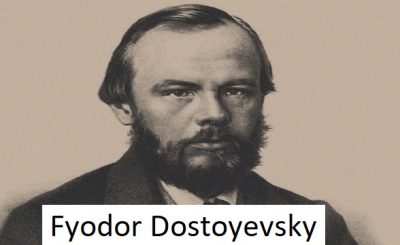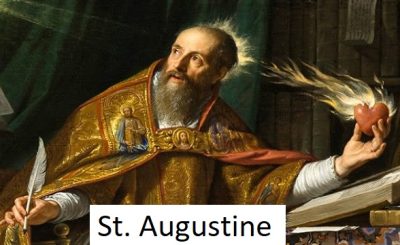German theologian and religious reformer Martin Luther, who was the driving force behind the Protestant Reformation in the 16th century, was born in Eisleben, Saxony (now in the German state of Saxony-Anhalt) on November 10, 1483, and died there on February 18, 1546. Through his words and deeds, Martin Luther sparked a movement that reformulated some fundamental Christian doctrines and split Western civilization in two.Roman Catholicism and the new Protestant traditions, primarily Lutheranism, Calvinism, Anglicanism, the Anabaptists, and anti-Trinitarians, divided Christendom. He is one of the key figures in the development of Christianity.
Early life and education
Early life
Luther’s family relocated from Eisleben to Mansfeld, a small town 10 miles (16 km) to the northwest, not long after Luther was born. In 1492, Hans Luther, who was successful in the local copper-refining industry, was elected to the Mansfeld town council.Apart from his old-age memories, which are understandably tinged with a certain romantic nostalgia, there are few sources of information about Martin Luther’s childhood.
In the spring of 1488, Luther enrolled in a Mansfeld Latin school to start his formal education.
The Apostles’ Creed, the Lord’s Prayer, the morning and evening prayers, as well as the Ten Commandments, were all memorized by heart there, where he also received a thorough education in Latin. The Brethren of the Common Life, a lay monastic order whose focus was education, sent Luther to nearby Magdeburg in 1497 so that he could enroll in one of their schools.He seems to have been significantly impacted by his personal piety. He enrolled in the University of Erfurt, one of Germany’s most prestigious institutions at the time, in 1501. The fact that he was listed as being in habendo on his matriculation records, which indicated that he was not eligible for financial aid, is an oblique indication of his father’s financial success.Luther completed the typical liberal arts course and earned his baccalaureate degree in 1502 after completing it. A master’s degree was given to him three years later. In-depth exposure to Scholasticism was provided by his studies; many years later, he referred to Aristotle and William of Ockham as “his teachers.”
Conversion to monastic life
Luther was qualified to pursue graduate studies in one of the three “higher” disciplines—law, medicine, or theology—having graduated from the arts faculty. He started his legal studies in compliance with his father’s wishes. He proudly bought a copy of the Corpus Juris Canonici, or “Corpus of Canon Law,” which is a compilation of key legal works, including ecclesiastical law texts.However, less than a month later, on July 17, 1505, Luther gave up his legal studies and enrolled in the Erfurt monastery of the Order of the Hermits of St. founded in 1256, the order of Augustine mendicants. He explained his sudden change of heart as being caused by a terrifying thunderstorm that passed close to the village of Stotternheim.that if he lived, he’d made an unconscious vow to become a monk.
Luther could have easily disregarded his vow, which was made under obvious duress; the fact that he did not suggests that the thunderstorm experience was only a catalyst for much deeper motivations. Understandably upset with him for leaving a, Luther’s father was.In favor of the monastery, a distinguished and successful legal career. The only thing Luther’s father said in response to his claim that he had been “besieged by the terror and agony of sudden death” during the thunderstorm was, “May it not prove an illusion and deception. The Augustinian order had split into two factions by the second half of the 15th century, one advocating reform in the direction of the order’s original strict rule and the other supporting changes. The strict, observant group included the monastery Luther joined in Erfurt. On September 15, 1505, Luther made his general confession, two months after moving into the monastery.and was accepted as a novice into the community.
The commitment that countless men and women had made throughout the ages—an existence devoted to an interweaving of daily work and worship—was reflected in Luther’s new monastic life. Only a table and chair were present in his basic accommodations, which included an unheated cell.The canonical hours, which started at 2:00 in the morning, and the monastic rule served as the framework for his daily activities. He was fully admitted to the order in the fall of 1506, at which point he started to get ready for priestly ordination. According to his own recollections, he proclaimed his first mass in May 1507 while shaking with a great deal of trepidation.
Doctor of theology
But Luther refused to accept a monk’s life of anonymity and routine. At the University of Erfurt, he started his theology studies in 1507. In the fall of 1508, he moved to the Wittenberg Augustinian monastery where he continued his academic pursuits. The Wittenberg University was founded in 1502, so its degree requirements were relatively lax.After only one year of study, Luther had met the requirements for both the baccalaureate in Bible and the next-highest theological degree, the Sententiarius, which would have allowed him to instruct students in Peter Lombard’s Four Books of Sentences (Sententiarum libri IV), the prevalent theological text of the time.But the Wittenberg University was unable to award him the degrees because he was transferred back to Erfurt in the fall of 1509.
The Erfurt faculty was then formally petitioned by Luther to award the degrees. Even though it was unusual, his request was ultimately granted because it was entirely appropriate.His subsequent studies for a doctorate in theology were put on hold by his assignment to represent the devout German Augustinian monasteries in Rome, most likely between the fall of 1510 and the spring of 1511. A papal decree issued by Pope Julius II that administratively merged the observant and nonobservant houses of the order was in question.Luther’s selection to represent the observant houses in their appeal of the ruling to the pope, along with a monastic brother from Nürnberg, is indicative of his developing role in his order. But because the pope’s decision had already been made, the mission was unsuccessful. Luther’s later remarks imply that the mission had a profoundly negative impression on him.On him, he discovered that the very core of Western Christendom lacked spirituality in Rome.
Soon after his return, Luther moved to the Wittenberg monastery to complete his coursework there. In the fall of 1512, after receiving his doctorate, he accepted the Augustinian order-provided professorship in biblical studies.His administrative duties in the Wittenberg monastery and the Augustinian order grew at the same time that he started to publish theological writings, such as the 97 theses titled Disputation Against Scholastic Theology.
Although there is some ambiguity regarding the specifics of Luther’s academic instruction, it is known that he offered courses on a number of biblical books.Luther was a fascinating lecturer, according to all accounts.
Luther’s lecture notes have been extensively studied by scholars to look for signs of a developing new theology, but the findings have been ambiguous. The notes also make no mention of the intense spiritual struggle that Luther later associated with this time in his life.







